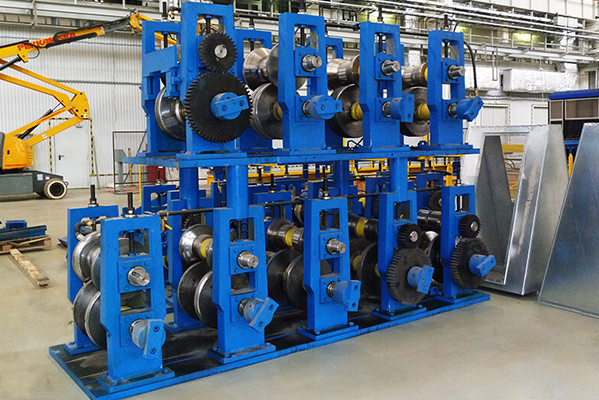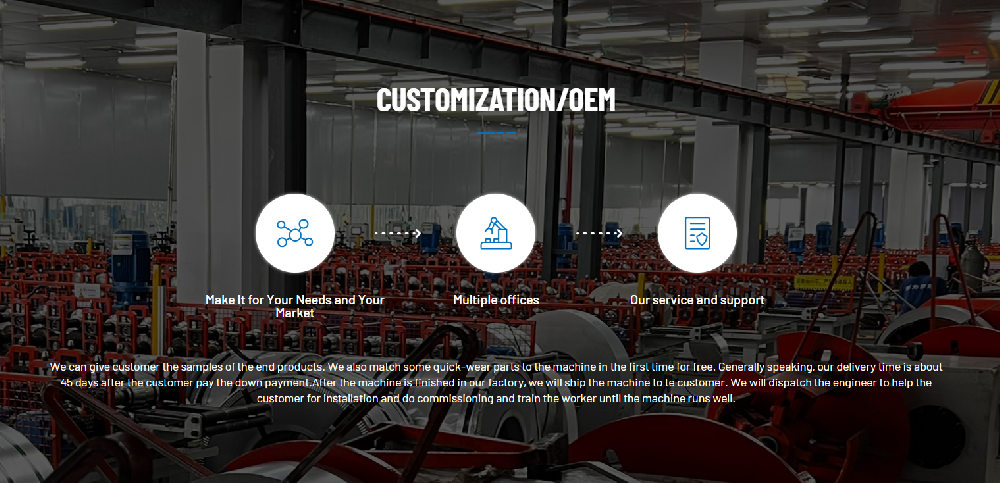Navigation Menu
Contact Us
- Email:
- info@wxavatar.com
- Address:
- Yurong Village, Yuqi Street, Huishan District, Wuxi, China.
Release Date:Jul 09, 2025 Visit:38 Source:Roll Forming Machine Factory
Producing the structural components of railcars demands specialized equipment capable of handling large, heavy-gauge materials with precision and efficiency. The choice of machinery is critical to ensure the strength, durability, and operational performance of the finished railcar.

Core Fabrication Processes and Associated Equipment
The primary stages of manufacturing structural railcar components typically involve material preparation, forming, joining, and finishing. Each stage relies on specific types of equipment:
Cutting Equipment: Railcar components, such as frame members, side panels, and roof sections, begin as large metal sheets or profiles. High-precision cutting machines are essential for this initial stage. This includes:
CNC Plasma Cutters: Ideal for quickly cutting through thick steel and aluminum plates, offering good speed and versatility.
Laser Cutters: Provide exceptional precision and a clean edge, particularly for thinner to medium-gauge materials, and are suitable for intricate designs.
Waterjet Cutters: Offer a cold cutting process, preventing material distortion, and can cut a wide range of materials, including various alloys and composite materials used in railcar construction.
Plate Shearing Machines: Used for straight-line cutting of large metal sheets, providing efficient and cost-effective material preparation.
Forming Equipment: Once cut, metal sheets and profiles are shaped into their required forms. This often involves bending, pressing, and roll-forming:
CNC Hydraulic Press Brakes: These machines are indispensable for bending metal sheets and plates into various angles and profiles, crucial for creating complex structural elements like car body panels and frame sections.
Roll Forming Equipment: For long, continuous structural components such as roof sections, side walls, or floor panels, roll forming lines are highly efficient. They progressively shape metal coils into desired cross-sections, providing consistent profiles and high production rates.
Stamping Presses: For smaller, intricate parts that require specific shapes or features, stamping presses can be employed to form components from metal blanks using dies.
Joining Equipment: Welding is the primary method for assembling railcar structural components. Given the heavy-duty nature and critical safety requirements, the welding equipment must be robust and precise:
Robotic Welding Systems: These advanced systems offer high accuracy, repeatability, and speed, making them ideal for large-scale production of complex welded assemblies. They can handle various welding processes like MIG, MAG, and TIG.
Automated Longitudinal Welding Systems: Specifically designed for long seams, such as those found on side panels or floor sections, these systems ensure consistent, high-quality welds over extended lengths.
Manual and Flexible Welding Equipment (MIG/TIG): While automation is prevalent, skilled welders using manual MIG (Gas Metal Arc Welding) and TIG (Gas Tungsten Arc Welding) equipment are still vital for complex joints, repairs, and components that do not lend themselves to full automation.
Jigs and Fixtures: Crucial for holding components precisely in place during welding and assembly, ensuring dimensional accuracy and preventing distortion. High-quality jig design is paramount.
Machining Equipment: Many railcar components require further machining for precise fitting, drilling holes, or creating specific interfaces:
CNC Machining Centers: These versatile machines can perform a range of operations like milling, drilling, and boring on large structural parts, ensuring high accuracy and consistent quality.
Assembly Equipment: The final stage involves bringing all the fabricated components together.
Assembly Jigs: Large, robust jigs are essential for assembling the entire railcar body, ensuring proper alignment and fit before final welding or riveting.
Material Handling Systems: Overhead cranes, gantry systems, and automated guided vehicles (AGVs) are necessary for moving heavy and bulky structural components throughout the production facility.
Material Considerations
The choice of equipment is also influenced by the materials used. Railcar structural components are typically made from:
Steel: Carbon steel and high-strength low-alloy (HSLA) steel are common due to their strength and cost-effectiveness. Equipment for steel fabrication must be capable of handling its hardness and weight.
Aluminum Alloys: Increasingly used for lighter railcars, aluminum requires specific welding techniques and equipment optimized for its properties. Robotic welding and specialized forming presses are often employed.

By leveraging a combination of cutting-edge cutting, forming, joining, and machining technologies, manufacturers can produce robust and reliable structural components essential for modern railcars. The integration of automation, particularly robotic systems, enhances both the precision and efficiency of the production process.